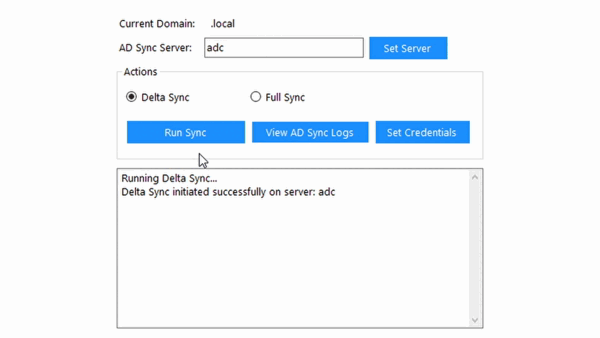Before we talk about the AD Sync Manager application… let’s talk about Active Directory & how that syncronises with the cloud!
Active Directory (AD) is a crucial component of many organizations’ IT infrastructures, serving as a central repository for user accounts, computer objects, and other critical data. As more businesses embrace cloud computing and migrate to Microsoft 365, the need to synchronize on-premises AD with Azure Active Directory (Azure AD) becomes increasingly important. However, managing this synchronization process can be a time-consuming and complex task, especially for administrators with limited experience or resources. That’s where AD Sync Manager comes in!
Introducing AD Sync Manager: A Free and Open-Source Solution
AD Sync Manager is a powerful yet user-friendly Windows application designed to simplify the management of Active Directory synchronization with Microsoft Azure Active Directory. Developed as an open-source project, AD Sync Manager offers transparency and encourages collaboration, fostering trust within the community.

Key Features of AD Sync Manager
- Initiate Delta and Full Synchronization: With a few clicks, administrators can easily trigger delta or full synchronization cycles, ensuring that changes in the on-premises AD are seamlessly propagated to Azure AD.
- View Synchronization Logs: AD Sync Manager provides direct access to detailed logs, allowing administrators to monitor the synchronization process and identify potential issues proactively.
- Manage Credentials: Securely store and retrieve domain admin credentials for authentication during synchronization, eliminating the need to manually enter credentials each time.
- Set AD Sync Server: Configure the AD Sync server for your environment, ensuring that synchronization targets the correct server and avoiding conflicts.
- Open-Source Code: As an open-source project, AD Sync Manager’s code is available for review, contribution, and verification, promoting transparency and trust within the community.
Getting Started with AD Sync Manager
To begin using AD Sync Manager, follow these simple steps:
- Download the latest release from the AD Sync Manager GitHub Repository.
- Install the application on a machine with at least remote access to your Active Directory environment.
- Launch AD Sync Manager and follow the on-screen instructions to set up and configure the application according to your organization’s requirements.

Video Tutorial
Join the AD Sync Manager Community
AD Sync Manager is more than just a tool; it’s a community-driven project that I welcome collaboration and continuous improvement. Whether you’re an experienced system administrator or a developer passionate about open-source software, you’re invited to contribute to AD Sync Manager.
- Report bugs or suggest new features by opening an issue on the GitHub repository.
- Submit pull requests with bug fixes, improvements, or new features.
- Follow the project on social media and join the discussion in relevant communities.
By embracing open-source principles and fostering an active community, AD Sync Manager aims to provide a reliable, secure, and user-friendly solution for Active Directory synchronization with Azure AD, empowering administrators of all skill levels to streamline their workflows and focus on more critical tasks.
Simplify your AD to Azure AD synchronization process today with AD Sync Manager! ♥
Don’t forget to check out: Effortlessly Uninstall Office: using OffScrub VBS Scripts
Join Our Community!
🌟 Get exclusive insights and the latest IT tools and scripts, straight to your inbox.
🔒 We respect your privacy. Unsubscribe at any time.

